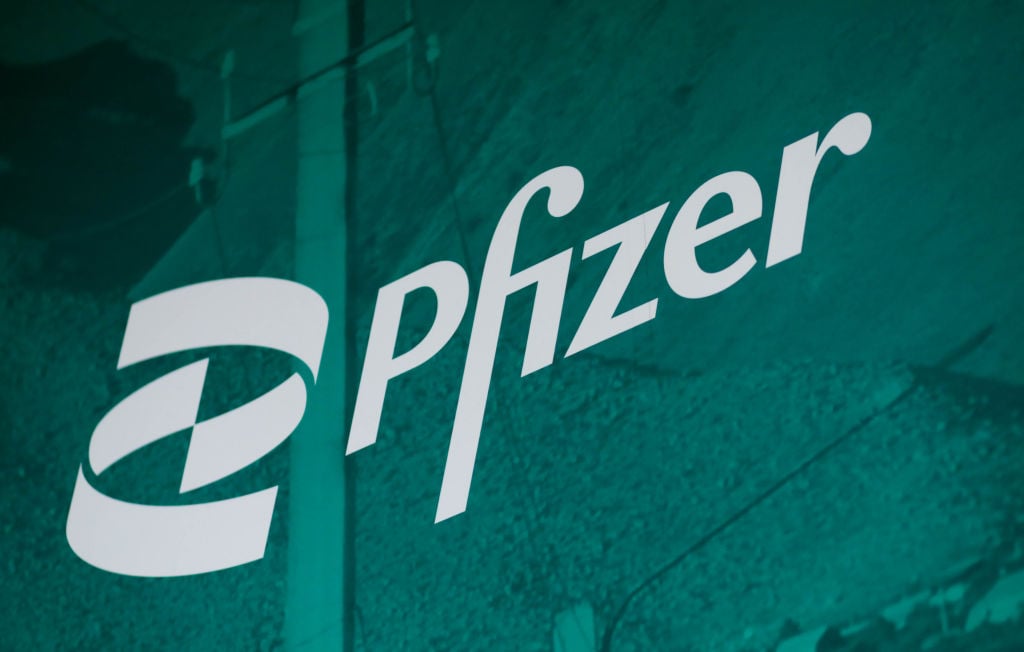Pfizer (PFE +1.71%) is out to an early lead with Vyndaqel, a drug that treats cardiomyopathy caused by transthyretin (TTR)-mediated amyloidosis (ATTR-CM), in which the TTR protein aggregates in the heart and ultimately interferes with its function. During the third quarter, the drug's first full quarter on the market in the U.S., Pfizer logged $79 million in sales of Vyndaqel.
While things are humming along, the big pharma needs to watch its back, because Eidos Therapeutics (EIDX +0.00%) is coming up from behind with its drug candidate, AG10.
Data from a long-term extension of a phase 2 clinical trial presented at this week's meeting of the American Heart Association showed that 8.5% of patients taking AG10 had all-cause mortality -- that is, the patient died or needed a cardiac transplant -- and 25.5% of patients were hospitalized for cardiovascular issues after a median of 15 months.
There was no control group taking placebo for this part of Eidos' study, but the results look pretty good compared to what Pfizer saw in its pivotal ATTR-ACT study at 15 months:
|
Drug |
All-Cause Mortality |
Cardiovascular-Related Hospitalizations |
|---|---|---|
|
AG10 |
8.5% |
25.5% |
|
Vyndaqel |
15.9% |
34.5% |
|
Placebo (in Vyndaqel study) |
15.3% |
41.8% |
Data sources: Eidos Therapeutics and Pfizer.
Caveats
It can be dangerous comparing data across clinical trials, primarily because the studies can enroll different types of patients. But Eidos' study arguably enrolled more-advanced patients than Pfizer's study, since Pfizer allowed patients designated as New York Heart Association (NYHA) Class I -- patients with minimal symptoms -- while Eidos only enrolled NYHA Class II and Class III patients, who have more severe symptoms.
The all-cause mortality data is also hard to interpret because Pfizer's study went on for 30 months, and by the time it finished, the Vyndaqel results had separated from the placebo with rates of 29.5% and 42.9%, respectively. It seems that 15 months may be too early to analyze all-cause mortality, although AG10 beating the placebo group from Pfizer's study certainly seems promising.

Image source: Getty Images.
Phase 3 is key
While the currently available comparisons are less than perfect, the phase 3 study of AG10 should provide a better indication of how well it'll compete with Vyndaqel. The study, dubbed Attribute-CM, started in February and continues to enroll patients.
The first readout, measuring how far patients can walk in six minutes, will come 12 months after the study completes its enrollment. For reference, patients treated with Vyndaqel could walk about 25 meters less when they were tested after 12 months, compared to how far they could walk at the beginning of the study, while patients taking placebo had a decrease of about 58 meters.
Like Pfizer's ATTR-ACT study, Eidos' Attribute-CM will also look at all-cause mortality and frequency of cardiovascular-related hospitalizations, but those won't be measured until 30 months. Fortunately, Eidos thinks it can get an accelerated approval from the Food and Drug Administration based on the six-minute walk test, and then a full approval based on the mortality and cardiovascular-related hospitalizations endpoints.
Waiting for a winner
Eidos may have a better drug to treat ATTR-CM, but investors are going to have to wait awhile for the data. Depending on how quickly Eidos can finish enrolling its phase 3 trial next year, data might not be available until late 2021, setting up an approval and launch in late 2022 or even in 2023.
Unfortunately for Eidos, that gives Pfizer a long leeway to become the established drug for ATTR-CM patients. On the plus side, Pfizer has a lot of work to do finding those patients; the company estimated that just 1% to 2% of ATTR-CM patients had been diagnosed when it launched Vyndaqel earlier this year, and by the end of the third quarter, management estimated the diagnosis rate was still only "greater than 4%." By coming in later, Eidos will hopefully have the advantage of a much larger market, with Pfizer having used its marketing muscle to locate a vast majority of the estimated 100,000 ATTR-CM patients in the U.S.






